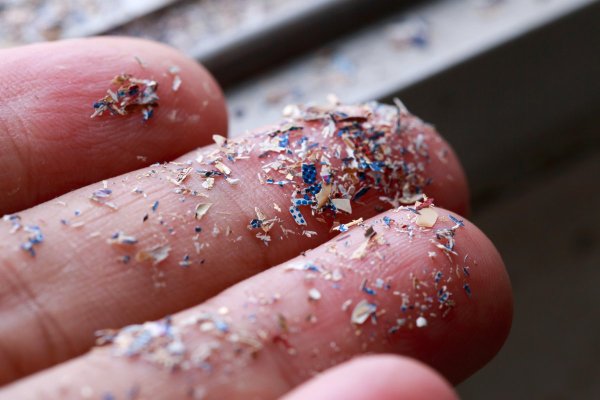Definition and Classification
Microplastics are plastic particles measuring less than 5 millimeters in diameter. They are categorized into two types:
- –Primary microplastics: Manufactured intentionally for products like cosmetics, industrial abrasives, and microfibers from textiles.
- –Secondary microplastics: Result from the breakdown of larger plastic items due to environmental factors such as UV radiation and mechanical abrasion.
Sources
Microplastics originate from various sources:
- –Industrial products: Microbeads in personal care products and pellets used in plastic manufacturing.
- –Textile fibers: Synthetic fabrics release microfibers during washing.
- –Degradation of larger plastics: Environmental exposure leads to fragmentation of plastic waste.
- –Atmospheric deposition: Microplastics are transported through the air and deposited in different environments.
Environmental Distribution
Microplastics are found in diverse environments:
- –Marine ecosystems: Detected in surface waters, deep-sea sediments, and marine organisms.
- –Freshwater systems: Present in rivers, lakes, and drinking water sources.
- –Soil and terrestrial environments: Accumulate through agricultural practices and atmospheric deposition.
- –Atmosphere: Airborne microplastics have been identified in urban and remote areas.
Ecological and Human Health Impacts
The presence of microplastics raises concerns about their potential effects:
- –Marine life: Ingestion by marine organisms can lead to physical harm and chemical exposure.
- –Terrestrial organisms: Soil contamination may affect soil health and terrestrial species.
- –Human health: Potential exposure through ingestion, inhalation, and dermal contact, though the full extent of health impacts is still under investigation.
Mitigation Strategies
Efforts to address microplastic pollution include:
- –Policy measures: Bans on microbeads in personal care products and regulations on plastic waste management.
- –Technological innovations: Development of biodegradable plastics and improved wastewater treatment processes.
- –Public awareness: Educational campaigns to reduce plastic consumption and promote recycling.
Research and Monitoring
Ongoing research focuses on:
- –Detection methods: Developing standardized protocols for sampling and analyzing microplastics.
- –Impact assessments: Studying the effects on ecosystems and human health.
- –Source identification: Tracing the origins of microplastics to inform mitigation efforts.
Future Directions
Addressing microplastic pollution requires:
- –International collaboration: Coordinated efforts to implement policies and share research findings.
- –Innovative solutions: Advancements in materials science to create sustainable alternatives to conventional plastics.
- –Comprehensive monitoring: Establishing global monitoring networks to track microplastic distribution and trends.
